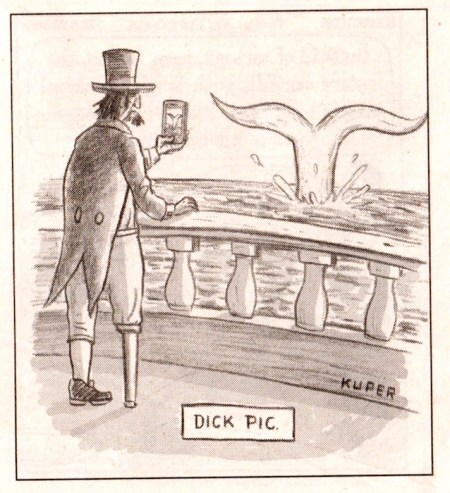It started innocently enough, with a Jack Ziegler cartoon in the January 11th New Yorker:
 (#1)
(#1)
Captain Ahab, identifiable through his peg leg and harpoon, is apparently looking for his whale in a book store (where he will, no doubt, find copies of Moby-Dick, but no whales). Of course, the cartoon isn’t comprehensible if you don’t know the outlines of the story, but more than that, Ahab and the White Whale have become stock figures in popular culture, and, indeed, a conventional theme of gag cartoons: a cartoon meme.
I then went to search on {Ahab cartoon}, so that I could justify the claim that there was such a meme, and was inundated with examples. In fact, I was inundated with examples from the New Yorker alone, including two more by Jack Ziegler. I stopped collecting them when I had 10 single-panel cartoons plus a New Yorker cover. God only knows how many more there are.
(more…)








